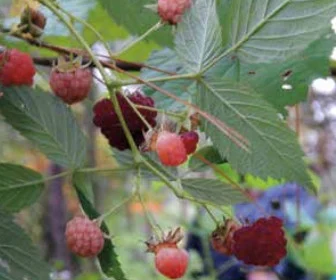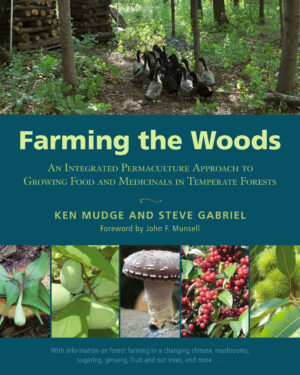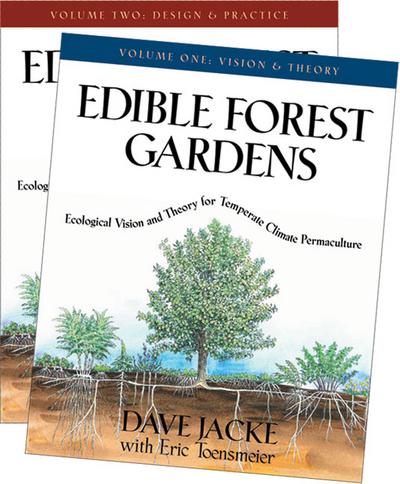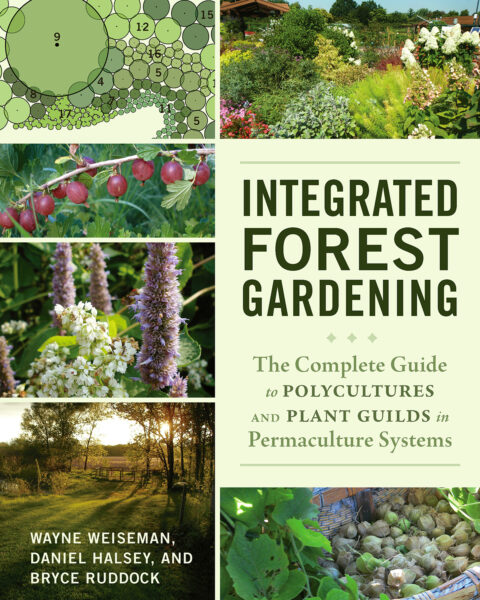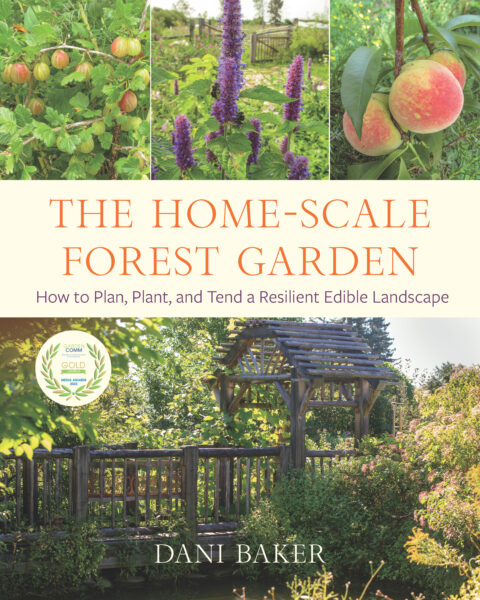Farm the Woods: Grow Food and Medicinals in Forests
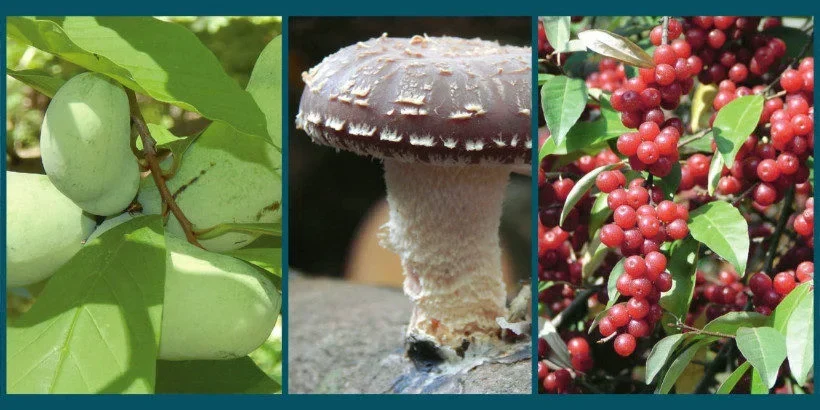
Farm the Woods: Finding the Perfect Spot
Besides mushrooms, when we consider the majority of food crops in the forest farm, most are trees and woody shrubs that produce fruit and nuts. Anyone looking into the potential of these will notice that many plant profiles claim the plants will “tolerate” shade, but rarely do you see a mention of such crops thriving in shade. This is simply because production of fruits and nuts, from a biological perspective, is energy intensive. So while many plants will accumulate trunk wood, grow, and photosynthesize in surprisingly low light conditions, most need access to direct sunlight to produce a decent yield.
Light & The Forest
Literature often emphasizes the need for sunlight in fruiting plants, yet there are examples of highyielding currants (Ribes), blackberries, pawpaws, and other fruits within the forest. As cultivars are bred and released, emphasis has not been on selection for any shade tolerance; in fact, in many cases, plants are selected for performance in open sun.
This is another justification for forest farmers to plant seedling stock in a variety of locations, so that selection can be done to maximize efficiency in more forested settings.
That said, there are multiple directions in which to take the concept of “light regime”; that is, the amount of available light and how it will affect both plant growth and fruiting. The good news is that healthy forests need to have a range of light regimes, and as forest farmers it is our job to help cycle them through the various stages.
Defining Light Regimes
Defining the difference in light regimes will assist in understanding their relationship to crop production. In the most basic sense classifications are made on the basis of the percentage of canopy cover; that is, the percentage of shade cast onto the forest floor.
It’s important to remember that not all closed canopies are created equal. Even if dealing with an 80 to 100 percent canopy cover, both the type of tree and the height of the canopy can have implications for light coming through to lower layers of the forest. For example, at the MacDaniels Nut Grove, the area called Walnut Island is named for a small zone with a seasonal creek that is dominated by several 80-year-old eastern black walnuts as the overstory.
These trees range from 50 to 80 feet in height and cast shade over the site while still allowing for a significant amount of secondary light to penetrate. This amount of light has proven to be acceptable for many species, including pawpaw and elderberry, while fruit production on the raspberries planted there has been inadequate from a cropping standpoint. This contrasts significantly with the forest at Wellspring Forest Farm, which is a 100 percent canopy of sugar maple. This type produces a very dense shade in which none of the above crops would fare well. Of course, the conditions are perfect for mushroom cultivation.
Gaps, Clearings, and Edges
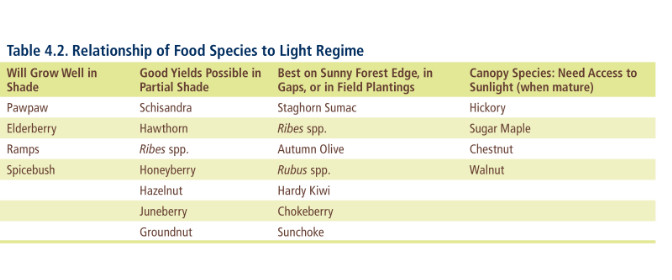 Another way to take advantage of a natural forest pattern (disturbance) is to utilize (or create) spaces in and around the forest that get some extra sunlight throughout the course of the day and season. In wild forests this happens all the time: A tree falls in the forest and creates an opening where more sun-loving species can thrive.
Another way to take advantage of a natural forest pattern (disturbance) is to utilize (or create) spaces in and around the forest that get some extra sunlight throughout the course of the day and season. In wild forests this happens all the time: A tree falls in the forest and creates an opening where more sun-loving species can thrive.
In addition, utilization of forest edges (including old hedgerows) can be seen as a form of forest farming that also offers some flexibility in terms of light access. Table 4.2 offers some suggestions of plants in relationship to light conditions.
Plant Selection Criteria
There are a score or more of potential plants to choose from in temperate agroforestry. Here are some criteria that guided selection for this book:
- Evidence exists (literature or grower or other expert advice) of successful cultivation in a forest niche.
- Natural habitat of the plant is in the forest.
- Potential exists for both domestic and commercial applications.
- Demonstrated cultivation techniques exist, even if underdeveloped.
- There are health and nutritional benefits for humans.
With the exception of nut trees and pawpaw, elderberry, and tree syrups, none of the foods in this selection are currently grown seriously as forest-farmed crops for commercial sales. Ribes (gooseberries and currants), Rubus (raspberries and blackberries), pecans, Chinese or hybrid chestnuts, and hazelnuts are available commercially but are usually grown in full-sun, orchard-style plantings. Landowner objectives should drive design to incorporate these species in the scale that fits personal goals.
Recommended Reading
Recent Articles
Garlic mustard: while known as “invasive,” this plant can be consumed in its entirety and has great nutritional value. Plus, the garlic-flavor is a perfect addition to any recipe that calls for mustard! The following are excerpts from Beyond the War on Invasive Species by Tao Orion and The Wild Wisdom of Weeds by Katrina…
Read MoreEveryone loves a refreshing, fermented, nutritious drink…even your garden! Take your fermentation skills out of the kitchen and into the garden by brewing fermented plant juice. The following is an excerpt from The Regenerative Grower’s Guide to Garden Amendments by Nigel Palmer. It has been adapted for the web. How to Make Fermented Plant Juice Fermented…
Read MoreWant to see your crops thrive this upcoming growing season? The key is in soil fertility and health. Spend time maintaining your soil’s health to guarantee bigger and better crops come harvest time! The following is an excerpt from No-Till Intensive Vegetable Culture by Bryan O’Hara. It has been adapted for the web. What Is Soil Fertility?…
Read MoreMany know the effects of catnip on our feline friends, but few realize that catnip has medicinal effects for humans. From stomach aches to reducing fevers, catnip is a versatile herb with many benefits. The next time you grow this plant for your cat you may end up taking a few cuttings for yourself! The…
Read MoreIt’s time to take control of your seeds and become a plant breeder! Saving your seed allows you to grow and best traditional & regional varieties, and develop more of your own. The following excerpt is from Breed Your Own Vegetable Varieties by Carol Deppe. It has been adapted for the web. Becoming A Plant…
Read More

